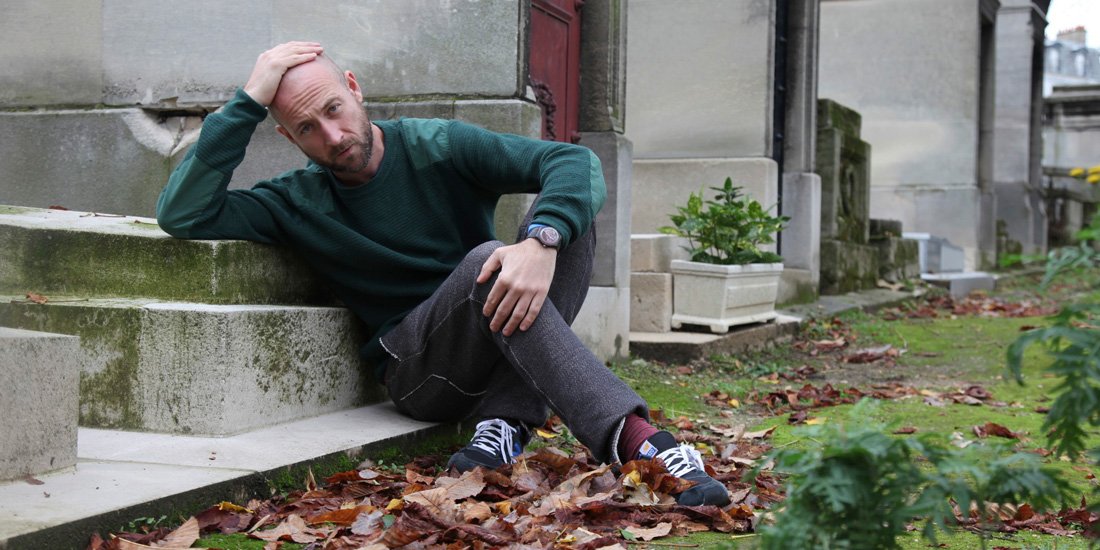Ben Hackworth, writer and director, Celeste
I hope the audience feels an opening of their hearts and a profound sense of love’s restoration ...
For the past two decades, Ben Hackworth has been one of the Australian film industry’s brightest stars. Since initially earning acclaim in 2001 when his first short film Martin Four was selected at 2001 Cannes Film Festival, Ben has maintained a high standard of quality. His Screen Australia-funded short film Violet Lives Upstairs won the 2004 Australian Film Critics Circle Award for Best Short Film, while his feature-length debut Corroboree was an official selection at the Toronto, Berlin, Melbourne and Sydney International Film Festivals. Ben’s latest effort, Celeste, is the Brisbane International Film Festival’s opening-night flick, and it is already earning buzz thanks to performances from Radha Mitchell and Ben’s use of the Far North Queensland at Celeste’s setting. Before the festival kicks off on Thursday October 11, we spoke to the Brisbane-born writer and director about how the film came together.
To start, tell us a little about your childhood – where did your passion for the moving image originate?
Wizard of Oz and Mary Poppins were my favourite! I also remember watching The Elephant Man on television late at night when I was really young – it deeply affected me. In my teenage years it was Twin Peaks, John Cassavetes, Federico Fellini and Luis Buñuel.
Congratulations on putting together your latest feature film Celeste! What inspired the story originally?
The story wasn’t crystalline at its inception. It actually began as a very different story, quite off the wall, about a brother and sister’s reunion and a strange carnival for the dead hosted by an eccentric widow. The story of Celeste emerged around five years ago. That is when we really discovered Jack and Celeste. The relationship of Jack and Celeste as well as some of the dynamics in the story world were inspired by relations in my extended family, growing up with a stepmother.
It was almost ten years ago you pitched the story idea for Celeste to producer Lizzette Atkins. How has the story evolved much in a decade from its inception?
Lizzette and I met ten years ago. We knew we wanted to work together and the script took a number of different incarnations as we searched for the right moments to carry the journey of our two characters, Celeste and Jack. Making this film was a collaboration in every sense.
You co-wrote the film with legendary playwright Bille Brown – what impact did he have on how the screenplay formed?
Bille was a close family friend. After the first draft, I turned to Bille for a second draft collaboration. So much of the script has changed since Bille sadly passed away in 2013, but there is a brilliant wit and capricious turn of phrase that come from Bille and his close friendship with Diane Cilento, who greatly inspired some of the character of Celeste.
Celeste touches on themes of grief, redemption, the past and inter-family relations. What were you looking to communicate as the core message of the film?
The film is about how a traumatic experience can suspend people in a moment in time. Both Celeste and Jack begin as egoistic characters. For Jack, the events of the past have kept him living as an adolescent, playing out a kind of defiance to his father. But ultimately, his behaviour is not that dissimilar to his father. Celeste on the other hand, has an urgent need to resolve the past and she beckons Jack home for her return to the stage. The relationship that develops between Celeste and the now “adult” Jack, offers them both a way to move forward.
The film’s location is central to the film. How did Far North Queensland help shape the tone and visual aesthetic of the movie?
The location affects everything. The humidity and heat means that you want to preserve energy. Therefore it seems fitting to find a sort of languid and sensual approach to the visuals and performance.
What challenges or unexpected obstacles did you come up against during the creation of Celeste?
The weather was tricky. We got washed out a few times. Also working around the schedule of bus tours of tourists was tricky, as they were also scheduled at magic hour, the perfect time for filming. There was a crocodile in the lagoon but luckily we never saw him.
What was the biggest leap technically and creatively that you made during the filming of the movie?
The scene of the concert was daunting as we only had one night and we had about 100 extras to coordinate. The scenes with Radha singing also required careful planning. Creatively, it was challenge as so much of the stories success is determined by the nuance of feeling in the performance, and finding the right visual approach to these moments that feels humble and respectful.
Celeste has been chosen as the opening night film for the Brisbane International Film Festival on Thursday October 11 – congratulations! How does it feel to have Celeste lead such an impressive line-up of films?
Yeah it’s a thrill! I never expected to make an opening-night film. We are also in an incredible line up of ten films in competition at Adelaide Film Festival followed by our international premiere at the London Film Festival. But I grew up in Brisbane, so it is very special to be opening the new festival.
What do you hope audiences take away from viewing this film?
Everyone will take away something different I’m sure, but I hope the audience feels an opening of their hearts and a profound sense of love’s restoration.
Do you have any words of wisdom to share with young local creatives?
Don’t be afraid of finding your unique way of looking at the world. Build strong relationships with collaborators. And for filmmakers, watch as much world cinema and historical cinema as you can. Everything has already been done so you need to know what you might be borrowing from.
Celeste will be kicking off the Brisbane International Film Festival on Thursday October 11. To have a look at the full programme and to purchase tickets, head to the BIFF website.

